Garmin GCV 10 Handleiding
Garmin
Niet gecategoriseerd
GCV 10
Bekijk gratis de handleiding van Garmin GCV 10 (4 pagina’s), behorend tot de categorie Niet gecategoriseerd. Deze gids werd als nuttig beoordeeld door 53 mensen en kreeg gemiddeld 5.0 sterren uit 27 reviews. Heb je een vraag over Garmin GCV 10 of wil je andere gebruikers van dit product iets vragen? Stel een vraag
Pagina 1/4

Transom-Mount Transducer
Installation Instructions
To obtain the best performance and to avoid damage to your
boat, you must install the Garmin® transducer according to these
instructions.
Read all installation instructions before proceeding with the
installation. If you experience difficulty during the installation,
contact Garmin Product Support.
Registering Your Device
Help us better support you by completing our online registration
today.
• Go to .http://my.garmin.com
• Keep the original sales receipt, or a photocopy, in a safe
place.
Contacting Garmin Product Support
• Go to and click www.garmin.com/support Contact Support
for in-country support information.
• In the USA, call (913) 397.8200 or (800) 800.1020.
• In the UK, call 0808 2380000.
• In Europe, call +44 (0) 870.8501241.
Important Safety Information
WARNING
See the guide in the Important Safety and Product Information
product box for product warnings and other important
information.
You are responsible for the safe and prudent operation of your
vessel. Sonar is a tool that enhances your awareness of the
water beneath your boat. It does not relieve you of the
responsibility of observing the water around your boat as you
navigate.
CAUTION
Failure to install and maintain this equipment in accordance with
these instructions could result in damage or injury.
Always wear safety goggles, ear protection, and a dust mask
when drilling, cutting, or sanding.
NOTICE
When drilling or cutting, always check what is on the opposite
side of the surface.
Loading the New Software on a Memory
Card
You must copy the software update to a memory card.
1Insert a memory card into the card slot on the computer.
2Go to .www.garmin.com/support/software/marine.html
3Select next to “Garmin Marine Network with SD Download
card”.
4Read and agree to the terms.
5Select .Download
6If necessary, select or save and open the file.Run
7If necessary, select the drive associated with the memory
card, and select > .Next Finish
Updating the Device Software
Before you can update the software, you must obtain a
software-update memory card or load the latest software onto a
memory card.
1Turn on the chartplotter.
2After the home screen appears, insert the memory card into
the card slot.
NOTE: In order for the software update instructions to
appear, the device must be fully booted before the card is
inserted.
3Follow the on-screen instructions.
4Wait several minutes while the software update process
completes.
The device returns to normal operation after the software
update process is complete.
5Remove the memory card.
NOTE: If the memory card is removed before the device
restarts fully, the software update is not complete.
Tools Needed
• Drill and drill bits
• 7 mm wrench
• 3 mm hex wrench
• Number 2 Phillips screwdriver
• Masking tape
• Marine sealant
About the Transducer
The transducer transmits and receives sound waves through the
water, and relays sound-wave information to your Garmin sonar
device.
Assembling the Transducer
1Secure the mount À to the transducer Á with the included
8 mm M4 screws Â, 4 mm flat washers Ã, and M4 split
washers Ä.
2Secure the mount to the bracket
Å with the included 12 mm
M4 screws Æ, M4 flat washers Ç, and M4 lock nuts È.
NOTE: You can use the 7 mm wrench to hold the lock nut in
place while you tighten each 12 mm M4 screw.
October 2014 Printed in Taiwan 190-01681-02_0B

Installing the Transducer on a Transom
Mounting Location Considerations
• The transducer should be mounted as close to the center of
the boat as possible.
• The transducer should not be mounted behind strakes,
struts, fittings, water intake or discharge ports, or anything
that creates air bubbles or causes the water to become
turbulent.
The transducer must be in clean (non-turbulent) water for
optimal performance.
• The transducer should not be mounted in a location where it
might be jarred when launching, hauling, or storing.
• On single-drive boats, the transducer must not be mounted in
the path of the propeller.
The transducer can cause cavitation that can degrade the
performance of the boat and damage the propeller.
• On twin-drive boats, the transducer should be mounted
between the drives, if possible.
Installing the Transom-Mount Hardware
NOTICE
If you are mounting the bracket on fiberglass with screws, it is
recommended to use a countersink bit to drill a clearance
counterbore through only the top gel-coat layer. This will help to
avoid any cracking in the gel-coat layer when the screws are
tightened.
The cables connected to the transducer should not be cut,
because cutting the transducer cables voids your warranty.
1Position the transducer mount À so the center of the bottom
of the transducer is level with the bottom edge of the transom
and is parallel to the water line.
2Align the transducer parallel to the water line Á, and mark
the center location of the two outer holes and the center hole
of the transducer mount.
3Wrap a piece of tape around a 4 mm (5/32 in.) bit at 15 mm
(19/32 in.) from the point of the bit, to avoid drilling the pilot
holes too deep.
4If you are installing the bracket on fiberglass, place a piece of
tape over the pilot-hole location to reduce cracking of the gel
coat.
5Using the 4 mm (5/32 in.) bit, drill the pilot holes
approximately 15 mm (19/32 in.) deep at the marked locations.
6Apply marine sealant to the included 20 mm screws, and
attach the transducer assembly to the transom.
NOTE: A third screw in the lower center screw hole stabilizes
the mount.
7If you must route the cable through the transom, choose a
pilot-hole location well above the waterline
à and mark it.
8Place a cable clamp on the transducer cable
Ä,
approximately one third of the distance between the
transducer and the top of the transom or the pilot hole.
9Mark the pilot-hole location for the cable clamp, and using a
3.2 mm (1/8 in.) bit, drill a pilot hole approximately 10 mm
(3/8 in.) deep.
10Apply marine sealant to the included 12 mm screw, and
attach the cable clamp to the transom.
11Repeat steps 10–12 to install the other cable clamp
approximately two thirds of the distance between the
transducer and the top of the transom or the pilot hole.
12If you marked a pilot hole in step 9, use a 25 mm (1 in.) drill
bit to drill a pass-through hole completely through the
transom.
13Route the transducer cable to the sounder:
• If you are routing the cable using a pass-through hole,
feed it through the hole you drilled in step 14, and install
the cable-entry cover Ã.
• If you are not routing the cable using a pass-through hole,
route the cable up and over the top of the transom
Å.
Avoid routing the cable close to electrical wires or other
sources of electrical interference.
Installing the Cable-Entry Cover
If you routed the cable through the transom after you installed
the transducer, you should install the cable-entry cover to keep
water from entering your boat.
1Place the cable-entry cover À over the hole and the cable,
with the opening pointing downward, and mark the location of
the two pilot holes.
2Remove the cable-entry cover, and, using a 3.2 mm (
1/8 in.)
bit, drill the pilot holes approximately 10 mm (3/8
in.) deep.
3Fill the pass-through hole with marine sealant so it covers the
cable completely and there is excess sealant around the hole
and the cable.
4Place the cable-entry cover over the hole and the cable, with
the opening pointing downward.
2

5Apply marine sealant to the included 12 mm M4 screws, and
attach the cable-entry cover to the transom.
6Wipe away all excess marine sealant.
Testing the Installation
NOTICE
You should check your boat for leaks before you leave it in the
water for an extended period of time.
Because water is necessary to carry the sonar signal, the
transducer must be in the water to work properly. You cannot
get a depth or distance reading when out of the water. When
you place your boat in the water, check for leaks around any
screw holes that were added below the water line.
Testing the Transom-Mount Transducer Installation
NOTICE
When adjusting the depth of the transducer, make the
adjustments in small increments. Placing the transducer too
deep can adversely affect the performance of the boat and put
the transducer at risk of striking underwater objects.
Test the transom-mount transducer installation in open water
free of obstacles. Pay attention to your surroundings as you test
the transducer.
1With the boat in the water, turn on the chartplotter.
2Drive the boat at a slow speed. If the chartplotter appears to
be working properly, gradually increase speed while
observing the chartplotter.
3If the sonar signal is suddenly lost or the bottom return is
severely degraded, note the speed at which this occurs.
4Return the boat to the speed at which the signal was lost,
and make moderate turns in both directions while observing
the chartplotter.
5If the signal strength improves while turning, adjust the
transducer so that it extends another
1/8 in. (3 mm) below the
transom of the boat.
6Repeat steps 2–4 until the degradation is eliminated.
7If the signal does not improve, move the transducer to a
different location on the transom, and repeat the test.
3
Product specificaties
| Merk: | Garmin |
| Categorie: | Niet gecategoriseerd |
| Model: | GCV 10 |
Heb je hulp nodig?
Als je hulp nodig hebt met Garmin GCV 10 stel dan hieronder een vraag en andere gebruikers zullen je antwoorden
Handleiding Niet gecategoriseerd Garmin
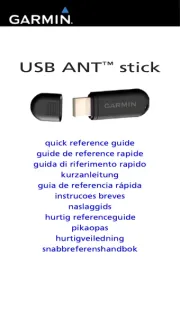
7 Mei 2025
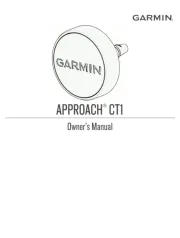
25 Februari 2025

9 Januari 2025

9 Januari 2025

14 December 2024

13 November 2024

2 Oktober 2024

23 Juli 2024

25 Juni 2024

9 Juli 2023
Handleiding Niet gecategoriseerd
- Tripp Lite
- Balderia
- Denver
- X-Rite
- Kindercraft
- Spektrum
- Argus
- McGregor
- Chieftec
- BakkerElkhuizen
- Thomas
- Smart365
- KENUCO
- Eero
- Naim
Nieuwste handleidingen voor Niet gecategoriseerd

1 Augustus 2025
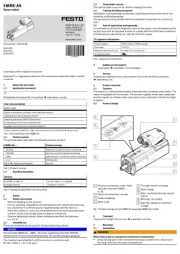
1 Augustus 2025
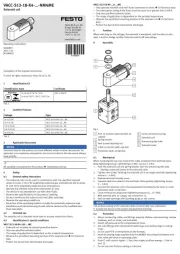
1 Augustus 2025
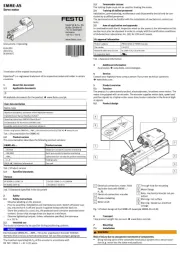
1 Augustus 2025
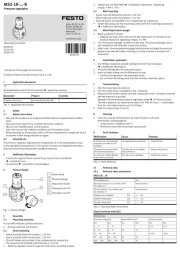
1 Augustus 2025

1 Augustus 2025
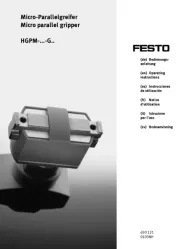
1 Augustus 2025
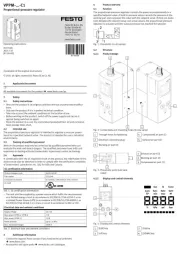
1 Augustus 2025
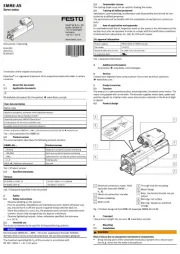
1 Augustus 2025

1 Augustus 2025